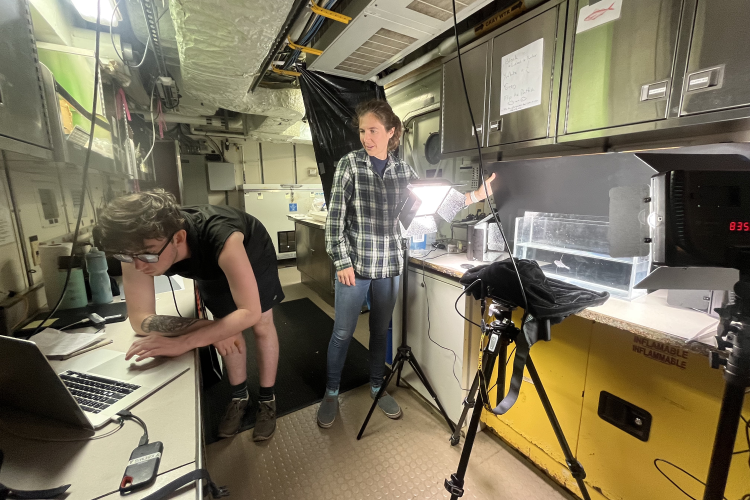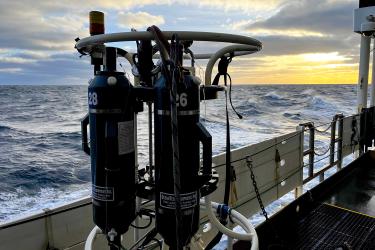I’m a research zoologist and curator of fishes for NOAA’s National Systematics Lab located at the Smithsonian Institution National Museum of Natural History in Washington, D.C. Scientists at the National Systematics Lab focus on identifying marine species and developing species identification tools. For me, that means participating in NOAA’s fisheries surveys like the Northeast Fisheries Science Center’s Bottom Trawl Survey.
In September, I sailed aboard the NOAA Ship Henry B. Bigelow on the fall Bottom Trawl Survey. On the survey, which is conducted in the Northwest Atlantic Ocean from Maine to North Carolina, scientists collect data on:
- Geographic distribution
- Size, age, and lifespan
- Maturity and spawning periods
- Diet
These characteristics differ between species, so, to manage fish sustainably, we must first know how to identify them. This sounds simple, but it can be challenging.
While many species are familiar in commercial or recreational fisheries, such as black sea bass, summer flounder, and bluefish, the total biodiversity is much larger. There are more than 600 species of fish living in the ocean from the Gulf of Maine to Cape Fear, North Carolina. This astonishing diversity includes many common species but also many rare and poorly understood species.
My team and I use both anatomical and genetic data to verify fish identifications. First, we photograph each species to capture their “true” or live colors and patterns. Then we take a tissue sample for genetic studies and preserve the specimen. The specimens are archived and permanently housed at the Smithsonian Institution National Museum of Natural History as voucher specimens.
These voucher specimens document the presence of a species at a particular time and place. The genetic sequence data and photographs allow us to verify the identification and compare specimens with others. The value of these vouchers is that they can be revisited and re-examined as we learn more about biodiversity. The photographs we take will also be used by scientists to help them reliably identify fish on future fisheries surveys.
This fall marks the 60th anniversary of the science center’s Bottom Trawl Survey. To celebrate, I’m highlighting 60 of our favorite species of fish we photographed during the survey. While this is only about 10 percent of fish diversity in the region, you can appreciate the fantastic biodiversity of the Northwest Atlantic Ocean!








